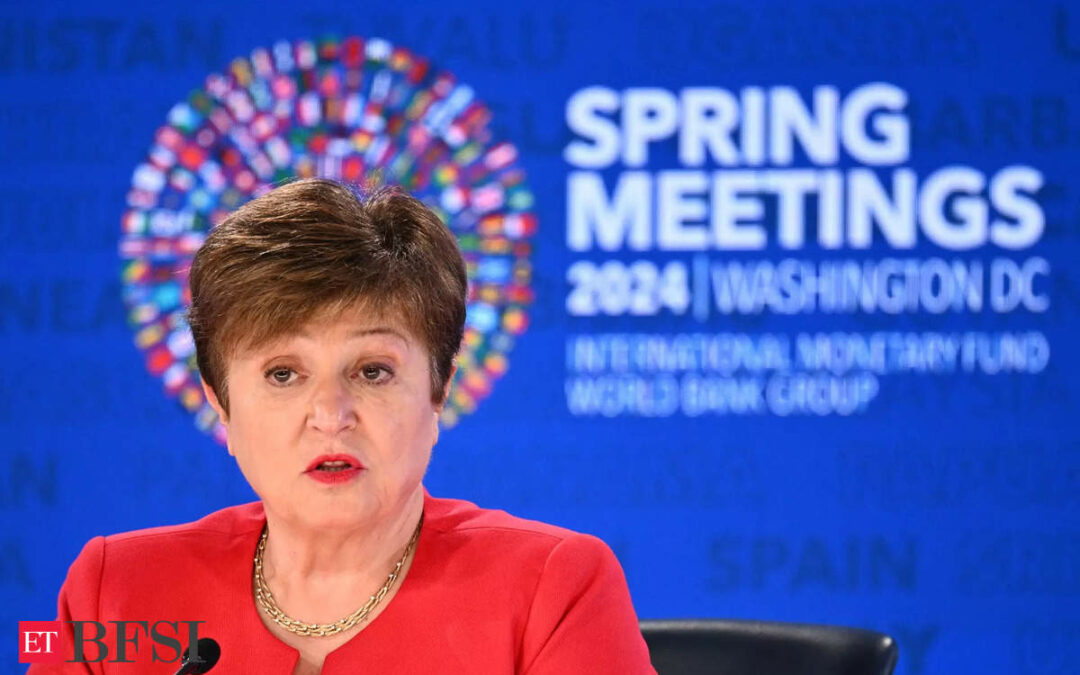WASHINGTON – Finance chiefs from economies large and small are scrambling to keep pace with the Federal Reserve’s rapid resetting of rate-cut expectations as U.S. inflation data roils markets from London to Brazil.
All insist they are setting policy independently of the Fed and basing it on local conditions. But those conditions are now being buffeted by a sudden likelihood of U.S. interest rates staying higher for longer than had been expected as the year began after a run of hotter-than-expected inflation data.
It’s an unexpected turn that has supercharged the U.S. dollar, stressing other currencies in return and raising the prospect of currency intervention in Asia. It has also forced Latin American central bankers to tailor their rate-cut plans, and even left officials in developed countries wondering whether new constraints on their own easing plans may emerge.
“When the March (U.S. inflation data) scare came, there was a drastic reversal of expectations, and this changed the mood significantly regarding how economic variables will behave worldwide,” Brazil’s Finance Minister Fernando Haddad said in a press conference in Washington on Thursday on the sidelines of the International Monetary Fund and World Bank spring meetings.
“Everything else depends somewhat on this.”
The dollar’s 4.75% appreciation against a basket of currencies this year is creating headaches in many quarters of the globe, but its gains of 9.6% against Japan’s yen and 6.5% versus South Korea’s won have been especially troublesome for two key U.S. trading partners. Those moves led officials from Japan and South Korea this week to huddle urgently with U.S. Treasury Secretary Janet Yellen in hopes of stemming the slides, holding out the possibility of intervention if needed.
Bank of Japan Governor Kazuo Ueda said the Japanese central bank may raise interest rates again if the yen’s declines significantly push up inflation, highlighting the impact currency moves may have on the timing of the next policy shift.
“Policymakers outside the U.S. are trying to address the recent weakness in (developed and emerging market) currencies in one of two ways – by suggesting possible FX intervention, and by tilting central bank rhetoric in a more ‘hawkish’ direction,” Thierry Wizman, global FX and rates strategist at Macquarie, wrote in a note. “Japan is trying both.”
‘NO URGENCY’
Roughly two weeks ago, global central bankers, finance ministers and capital markets had been in broad agreement that the world’s most important policy-setting central bank would shepherd them all down a path of looser credit starting in June.
It was a pivot by the Fed eagerly anticipated around the world, especially among smaller, debt-laden economies with limited ability to control their own borrowing costs or contain disruptive swings in their currencies.
A raft of U.S. economic data unfriendly to that aspiration has since intruded on that consensus, and Fed officials who four weeks ago had conditioned the world to expect a string of three, quarter-percentage-point rate cuts this year have changed their tune.
“I definitely don’t feel urgency to cut interest rates” given the strength of the economy, New York Fed President John Williams said at an event on the sidelines of the IMF and World Bank meetings. “I think eventually … interest rates will need to be lower at some point, but the timing of that is driven by the economy.”
Williams, the influential vice chair of the U.S. central bank’s rate-setting Federal Open Market Committee, was only the latest official to have suddenly turned squeamish about a turn to rate cuts after data showed the U.S. economy motoring at an unexpectedly brisk pace through the first quarter and inflation in particular proving to be unhelpfully sticky.
IMF officials urged Asian central banks to stick to their own knitting and avoid the temptation to lash their policy decisions too closely to anticipated moves by the Fed.
“If central banks follow the Fed too closely, they could undermine price stability in their own countries,” Krishna Srinivasan, the director of the IMF’s Asia and Pacific Department, said during a briefing on the region’s outlook.
The European Central Bank for one seems determined to heed that advice and press ahead with its own plans for a first rate cut in June regardless of the Fed’s reluctance.
“We need to recognize that and conduct monetary policy according to euro zone data,” Bank of Portugal Governor Mario Centeno told Reuters. “If that means we need to cut interest rates before the United States, so be it.”
Meanwhile, Pakistan Finance Minister Muhammad Aurangzeb, struck a sanguine tone even as he pursued talks with the IMF over a new loan program expected to be at least $6 billion.
“The Fed needs to make the decision based on what they see in their inflation trajectory here (in the U.S.) – but overall around the world, most of the central banks are looking to start cutting rates,” he told Reuters in an interview. “Maybe some short-term pressure – but do I see it as a big concern in the medium term? No.”











